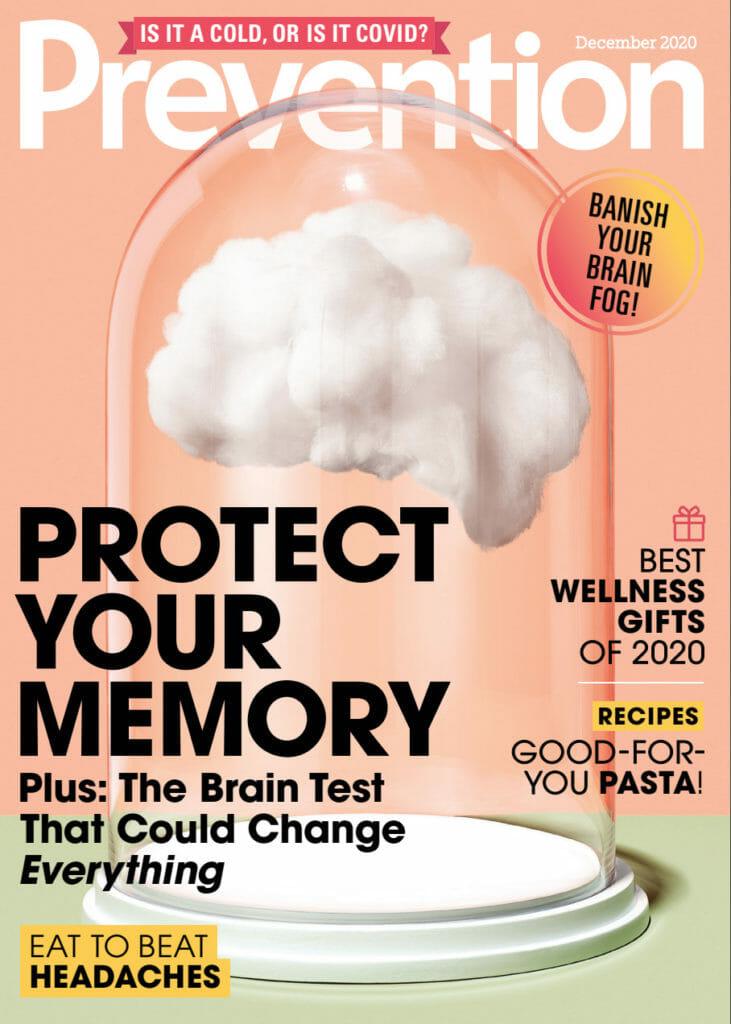In the days following COVID-19’s arrival in the United States, Prevention’s editorial leadership had a decision to make. The newly virtual editorial team was among the first to call attention to a health scourge that, at the time, seemed remote and almost hypothetical. But as the coronavirus quickly infected large swaths of the United States – where a great majority of the brand’s core audience resides – Prevention chose to err on the side of cautious, sober-minded reporting.
Rather than push to capitalize on whatever piece of COVID-adjacent information had captured the public’s imagination at that particular moment, Prevention’s editors and writers “skipped a lot of the noise,” as content director Sarah Smith put it. In concert with its medical board members, Prevention set about informing readers in a way that countered alarmist (and often erroneous) reports that flourished on social media. In doing so, it managed to steer clear of the misinformation mire that claimed any number of at-the-speed-of-digital publishers.
“Health is vibrant and fascinating, and we’ve always seen ourselves as a positive force for wellness,” Smith said. “That’s a challenge when health is scary, like it’s been this year. We leaned on what was happening now and what that might mean. It was practical talk, but without scare tactics.”
The approach has paid dividends, with Prevention reporting 10% growth in print and digital subscriptions and a 44% spike in site traffic between October 2019 and October 2020. While Smith and executive editor Devin Tomb don’t overtly describe them as such, one might characterize the gains as a victory of data over gut hunches, as a triumph of attentive and non-flashy reporting over dash-to-publish web journalism.
“I think that’s one of the reasons readers really trust us. We deliver quality information in a way that’s rooted in science,” Smith said.
To capitalize on that audience connection – further cemented by its pandemic-era virtual walks, which became something of a social-media sensation – the brand launched Prevention Premium last Thursday. There’s always some peril that comes with putting content behind a paywall, but the community focus of the Prevention effort feels member-friendly.

“It’s a nice bundle of things people get – the magazine, complete access to the site, some exclusive content – but it’s all rooted in the idea that readers trust what we have to say,” Smith noted.
“It’s about community. This is a place where we can really focus on quality, curating the best of what Prevention can offer,” Tomb added.
Given that the new premium offering has been in the world for less than a week, Smith believes it’s too early to predict how health and wellness marketers, a Prevention commercial mainstay for years, will embrace it. She’s nonetheless optimistic: “Marketers are telling us they love the insights we can get from the data points we get from readers. They want to see that trustworthiness and be aligned with [media] brands people trust.”
Prevention’s 70th birthday year hasn’t proceeded as anyone expected, though Smith said the COVID pivot wasn’t as much of an adventure as it has been for other publishers. “We had to rearrange some of the content in the June print issue, because, ‘Oh, let’s go to the beach’ would’ve been tone-deaf,” she noted.
At the same time, there’s some symmetry between 1950, the year of Prevention’s debut, and 2020. “The very first issue in 1950 was devoted to the Polio crisis,” Smith said. “We’re hoping we as a society have as much success eliminating COVID as scientists in the ‘50s did eradicating polio.”
As for what comes next, look for Prevention to devote more space and energy to brain health in 2021 and beyond. “Alzheimer’s scares people. It’s something people whisper about the way they used to whisper about cancer,” Smith explained. “Our medical advisors think there are going to be big breakthroughs in brain health over the next few years. That could be a new tent pole for us.”
And when the calendar turns to 2021, don’t expect Prevention to fall back on typical start-of-the-year fare. Rather than preaching personal change and immediate action, Tomb wants the brand to focus on full-body nourishment and non-restrictive means of achieving it.
“I have to be honest: I’ve never been a big fan of the ‘new year, new you’ trope,” Tomb says. “After the holiday season, it bums me out to see healthcare brands focusing on things like cutting your diet in January, which is the dead of winter and tough enough as is. After the year we’ve had, people are going to be less interested in that old-fashioned way of thinking.”







